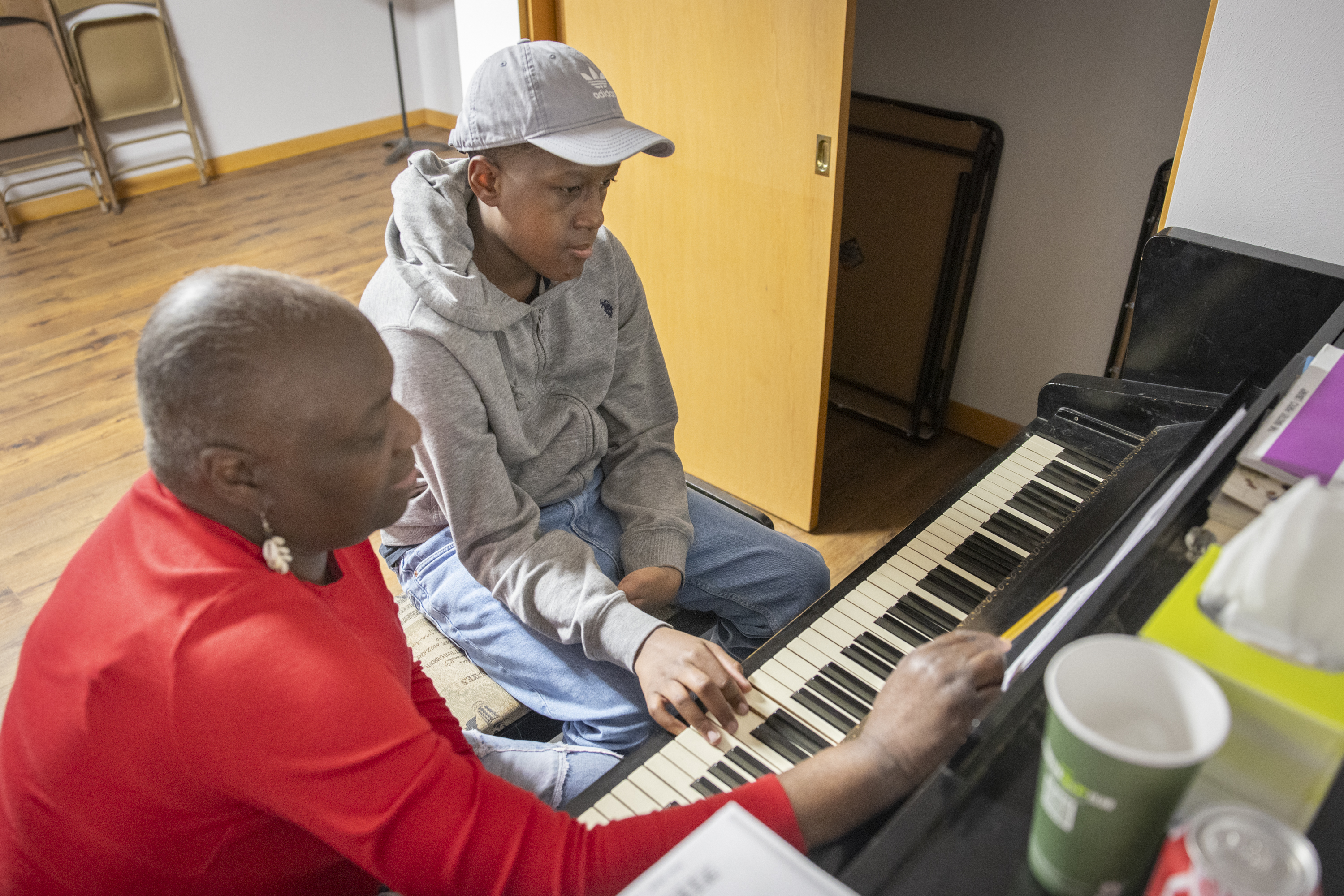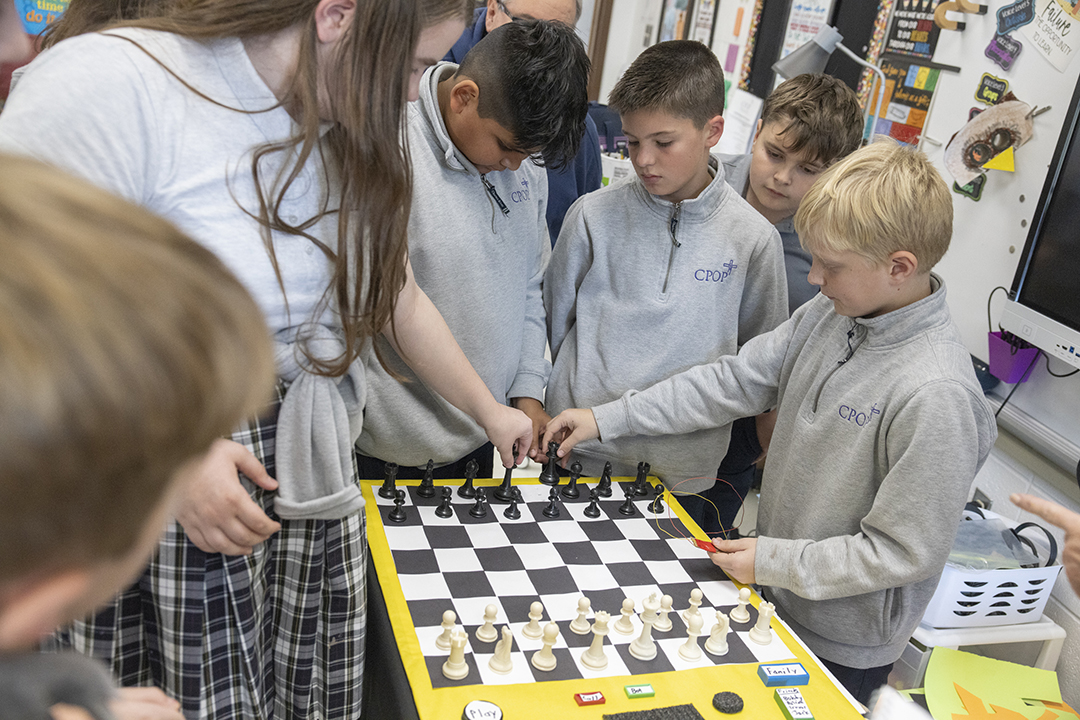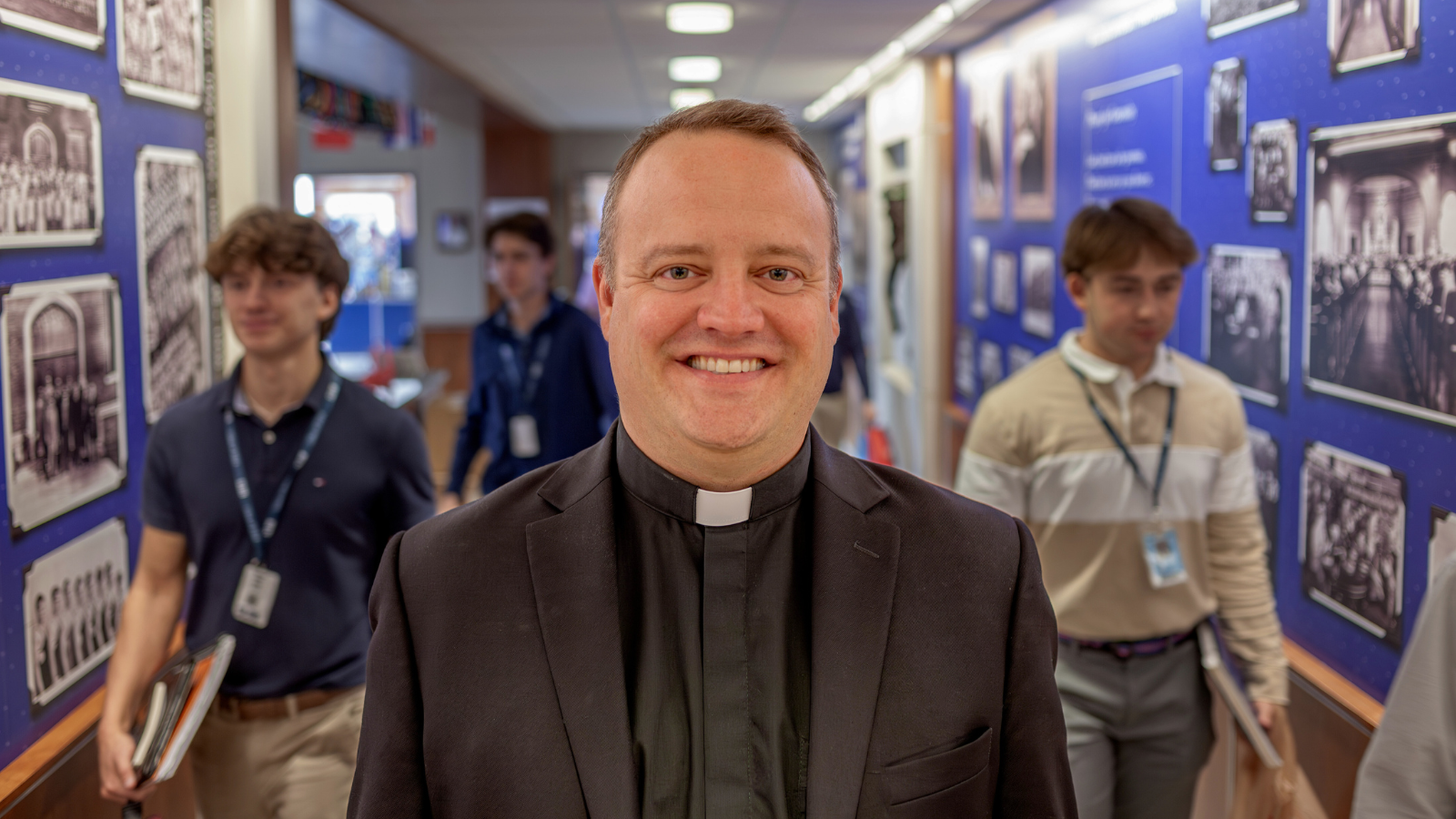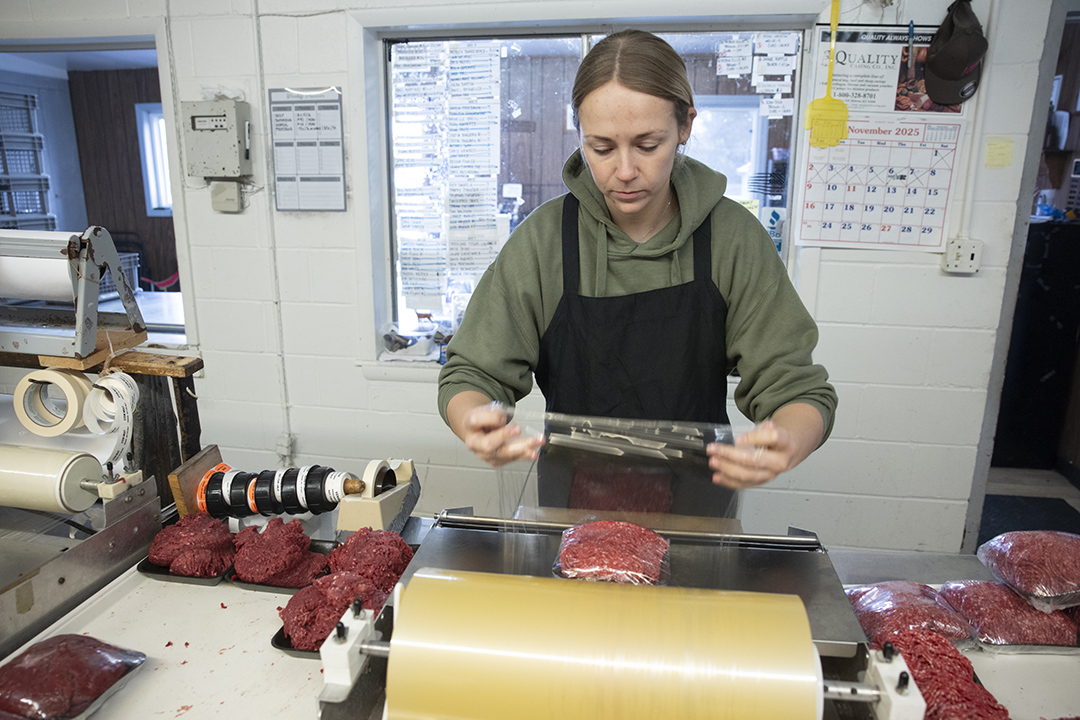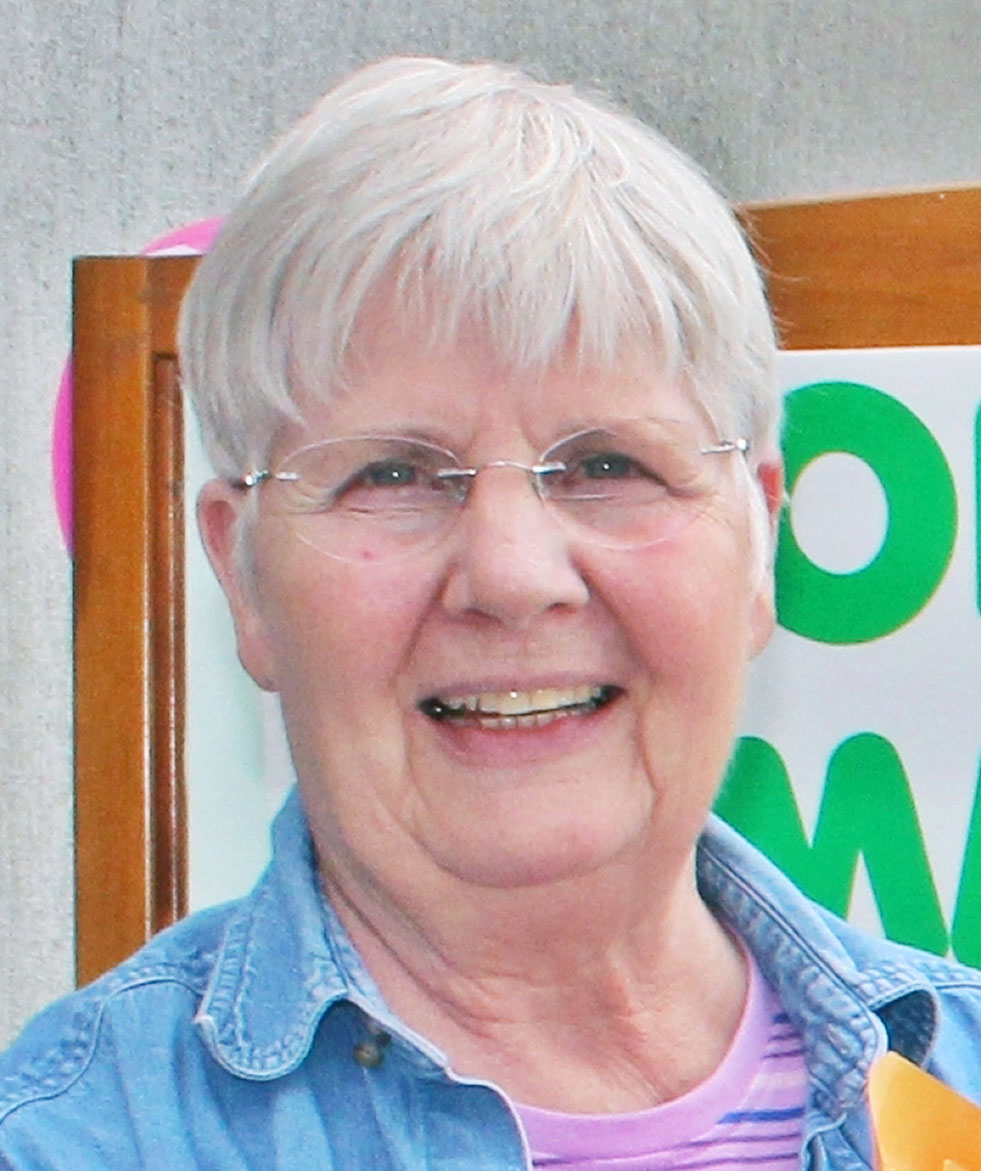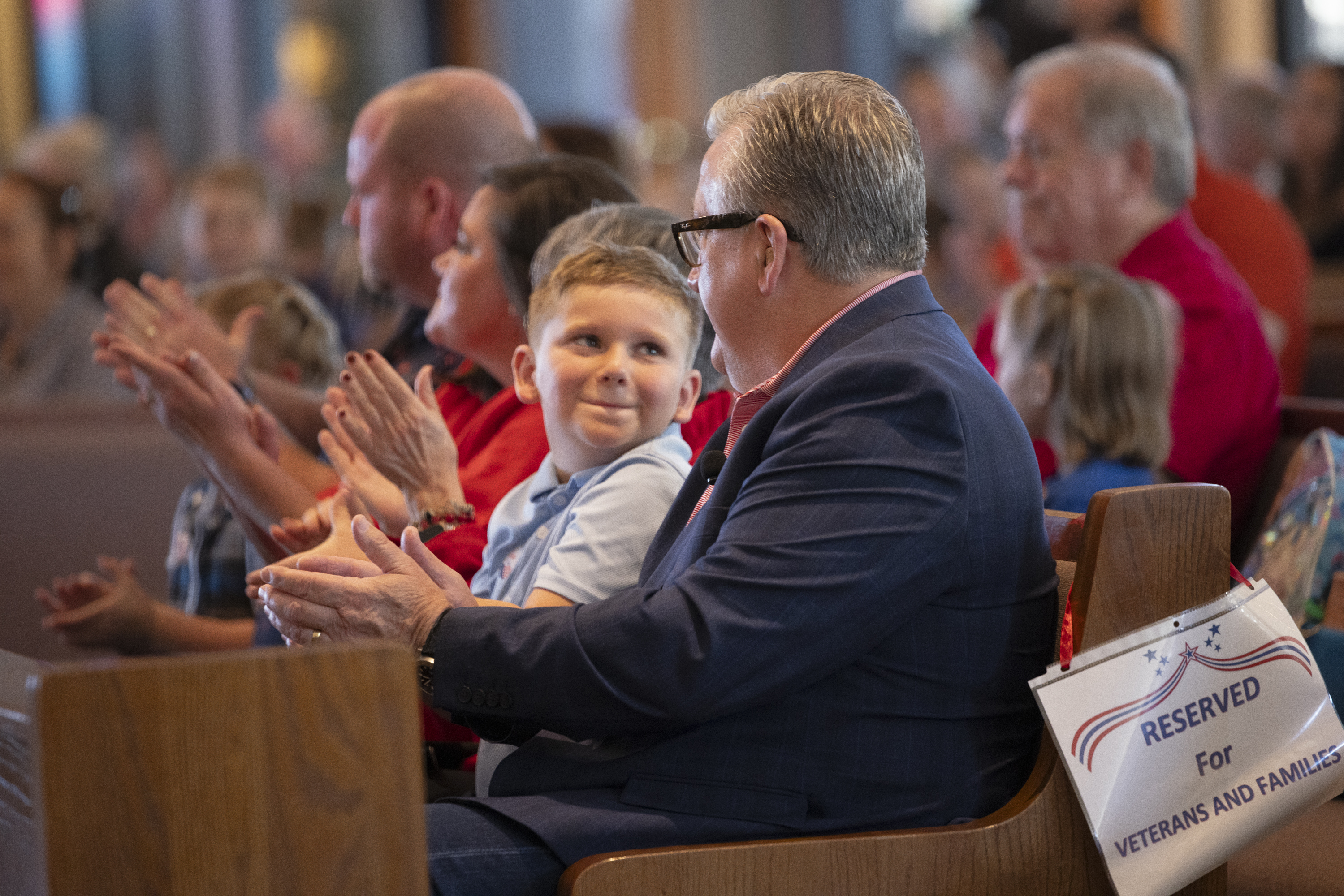Child safety program ‘opens eyes’ to signs of abuse
From April 2011
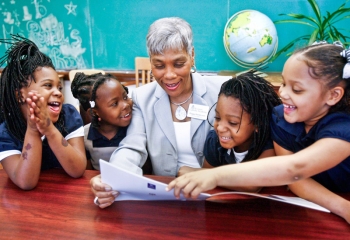
Keeping children safe starts with communication.
“The most important step, if you’re serious about ending child abuse,” said Terry Edelmann “is to communicate your concerns.”
Edelmann is director of the Safe Environment Program, the archdiocesan effort to protect children from abuse. Her goal, and the goal of the archdiocese is “to keep children safe” and to educate everyone on how to do that.
In conjunction with April designated Child Abuse Prevention Month, this is a good time to revisit the archdiocesan efforts, Edelmann said.
The Safe Environment Program includes a mandatory background check for anyone working with or near children; required participation in the two-hour Protecting God’s Children class, which includes videos; and reading and signing the Code of Ethical Conduct. A Safe Touch class is given annually to all Catholic school students and parish school of religion students to teach what is and is not appropriate behavior.
“Everyone involved with children must do this,” Edelmann stressed, “from the archbishop to the assistant soccer coach. Our goal is to keep children safe. And, as we have learned, there is no category of person who would not harm a child.”
In 2002, the U.S. bishops — following revelations of child sex abuse in the Church — implemented the national Charter for the Protection of Children and Young People. Across the country, dioceses have had multiple audits for compliance with the charter.
“The St. Louis Archdiocese has been audited seven times and passed all seven,” said Edelmann. Her program reaches out to every parish and school in the archdiocese, with 8,000 employees and 35,000 volunteers. She and her staff have trained about 100,000 adults since the program started.
Through that training many people have learned to spot what Edelmann called “red flag” behavior. “If someone has attended a Protecting God’s Children class and then read the Code of Ethical Conduct, that helps them take a good look at a situation that may make them uneasy. And if it does, they should talk to someone about that.”
Edelmann said the first call should be to the state Child Abuse Hotline, the second to the archdiocese, if an archdiocesan employee is involved. “People can call our office for advice,” she added.
Deacon Phil Hengen, director of the archdiocesan Office of Child and Youth Protection, said that, when asked by victims of abuse “what we are doing to make sure other children aren’t victimized, my answer is this program. It is an important and effective way to keep children safe.”
Peggy Henderson of St. Elizabeth Mother of John the Baptist Parish in North St. Louis is a big supporter of the Safe Environment Program.
A former member of the archdiocesan Review Board established under former St. Louis Archbishop (now Cardinal) Justin Rigali to review child abuse allegations against priests, Henderson served at several abuse allegation hearings.
That experience helped her to understand how abuse robbed victims of their childhood and how it affected them as adults.
“I learned that I need to be much more conscious of the signs out there (of abuse or potential abuse) to be able to protect children,” she said.
Henderson has been a child safety coordinator, overseeing the Protecting God’s Children effort at her parish. She teaches the the Safe Touch program for the children in St. Louis Catholic Academy, which serves her parish and others, and children in the parish. She is stepping down from her role as child safety coordinator soon, but will continue to teach the children’s Safe Touch classes.
“I think these are very effective programs at protecting children,” Henderson said. “Leading these (Protecting God’s Children) classes, I’ve seen that for some of the volunteers it is a real eye-opener for them to hear some of the details on these videos — how children feel being abused and how the perpetrators pursue these children. It helps give the volunteers signs of what to look for. And not only for the school and parish programs, but for their own children. It shows how vulnerable children are and how trusting they can be.”
Sometimes people come to class feeling “they already know everything” and it is a waste of their time, Henderson said. “But once they go through it, it opens their eyes. Everyone can learn something.”
Henderson is married to Ron Henderson, former chief of police for the City of St. Louis. “Even with my experience, with my husband in law enforcement, every time I see the video it makes me more conscious of how aware we must be to protect our children.
Important numbers
The Hotline (Missouri Department of Social Services Children’s Division), (800) 392-3738
The Archdiocese of St. Louis, (314) 633-2279
The Safe Environment Program, (314) 792-7271
Keeping Children Safe
The archdiocesan Safe Environment Program has three components.
Everyone working with or near children is required:
• To participate in the educational/training Protecting God’s Children Program
• To have background checks (updated every even-numbered year)
• To sign the Code of Ethical Conduct
In addition, the Safe Touch program is an educational program to help teach children what behavior is appropriate and what is not.
In the St. Louis Archdiocese, 100,000 adults have been trained through the Safe Environment Program, with about 80,000 in full compliance; all Catholic school and parish school of religion students are trained annually; there are approximately 8,000 adult employees and 35,000 volunteers in the Safe Touch Program.

